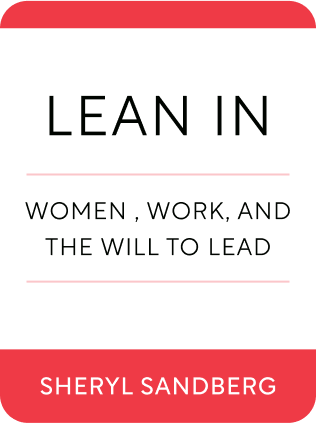

This article is an excerpt from the Shortform book guide to "Lean In" by Sheryl Sandberg. Shortform has the world's best summaries and analyses of books you should be reading.
Like this article? Sign up for a free trial here .
How have the gender roles changed over the years? Do modern societies still adhere to traditional gender roles?
In the last 30 years, gender roles have certainly changed but not significantly. Some of the lopsided traditional gender roles still prevail. Even the U.S. Census Bureau calls mothers the “designated parent,” while a father caring for his children is called a “child care arrangement.”
Here is how we can challenge and eventually overthrow the traditional gender roles.
Traditional Gender Roles Still Prevail
Data shows that when both spouses work full time, mom does 40% more childcare and 30% more housework than dad. (Same-sex partners tend to divide household tasks more equally.) But it doesn’t have to be this way. With knowledge and effort, traditional gender roles can be overthrown.
A Woman’s Partner Is Her Strongest Ally
Women with partners are more successful in the workforce. A majority of female business leaders have partners to whom they attribute their success. Conversely, 60% of women who left the paid workforce cited their husbands’ lack of participation in childcare and home duties as a direct cause.
Equitable parenting benefits the children. Kids with involved, loving dads have better cognitive abilities, a greater sense of well-being, lower delinquency rates, and higher educational achievement. They tend to be more socially competent and empathetic. This data is consistent against all socio-economic backgrounds.
Sharing home duties is critical to the career/family balance and requires communication, honesty and forgiveness. The division of labor is personal to couples and won’t be perfectly equal at all times, but rather a “pendulum” swinging back and forth.
But mom must not derail dad by slipping into “maternal gatekeeping,” which refers to women being controlling and judgemental about men’s child care methods. Women should let their partners do things their way; if he’s forced to do things her way, she’ll end up doing them. (Wives who engage in gatekeeping end up doing 5 more hours of family work per week.)
If you want a mate to be a true partner, treat him as an equally capable partner. Ideally, each parent should have their own responsibilities so it doesn’t feel like dad’s doing everyone a favor instead of simply doing his part.
The Workplace and Society Aren’t Helping
It’s not easy in the workplace for fathers who want to be good parents and partners. Paternity leave is scant and reduced work hours for dads is frowned upon. Men who prioritize family face negative consequences at work, including teasing, lower ratings, and fewer advancement opportunities. There’s negative social pressure if a dad drops out of the workforce to care for family; he’ll likely face loneliness and feel unsupported.
Since men are expected to put career first, if a wife out-earns her husband, her success is viewed as threatening to the marriage.
To pave the way for men to help in the household, companies and societies should even the playing field. This includes giving equal time for paternity and maternity leave, and being more receptive to stay-at-home fathers.
Find a True Partnership
The ideal partner is an equal. He wants to do his share in the home and thinks women should be ambitious, smart, and opinionated. While no one is perfect, and you will grow and learn together as you form your own partnership, it’s important to establish a 50-50 pattern from the start. If a marriage begins in an unequal place, it will only get more unbalanced when children come.
Equality between partners is equated with healthier, happier relationships. The risk of divorce reduces by half when a wife earns half the income and partner does half the housework.
True partnership sets the stage for the next generation. The sooner we break the cycle of gender-specific patterns in the home, the faster we’ll reach greater equality everywhere. Our goal is to model an equal division of labor for the next generation.

———End of Preview———
Like what you just read? Read the rest of the world's best book summary and analysis of Sheryl Sandberg's "Lean In" at Shortform .
Here's what you'll find in our full Lean In summary :
- How professional, personal, and societal hurdles are holding women back
- Why you need to commit to your career with risks and ambition
- How your career is more like a jungle gym than a ladder






